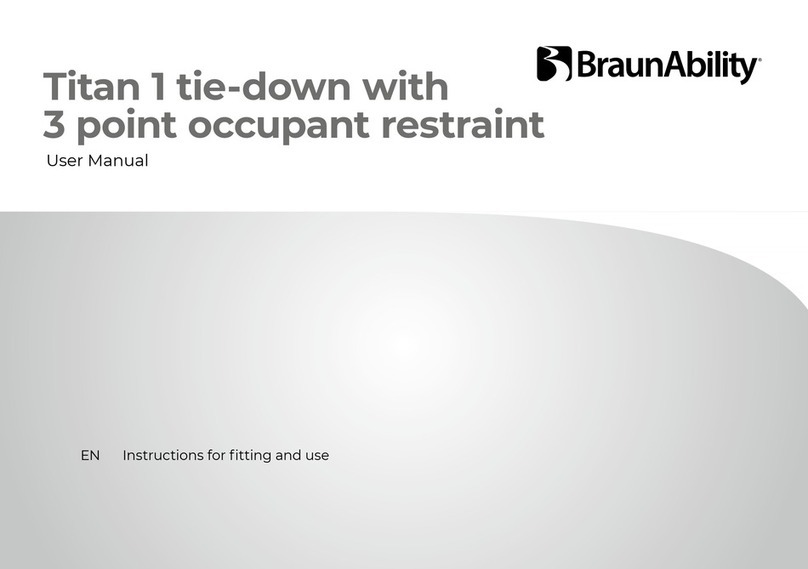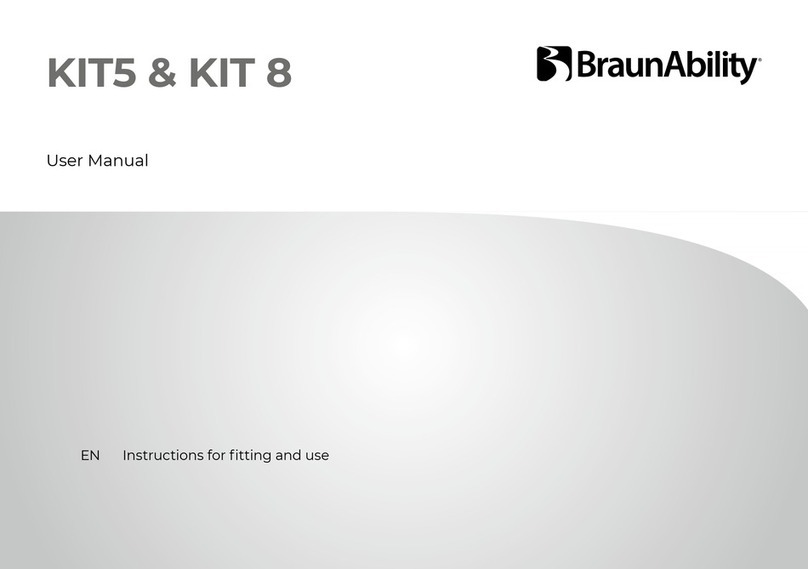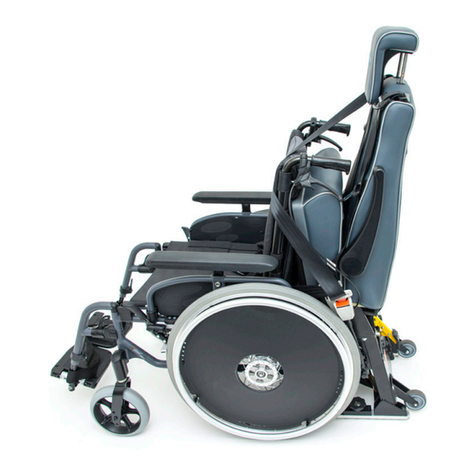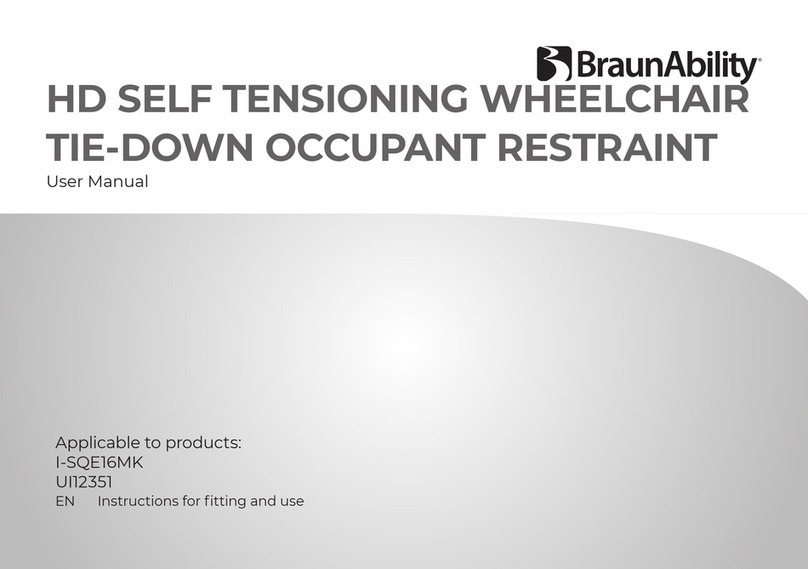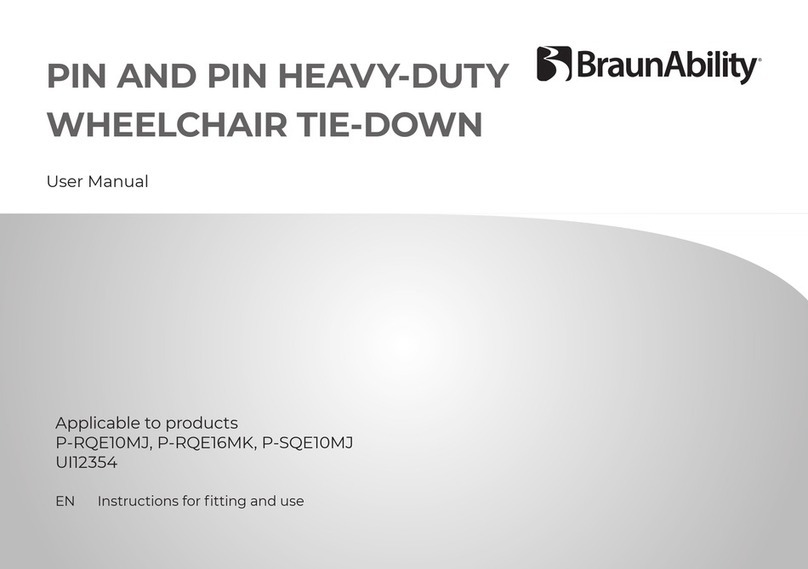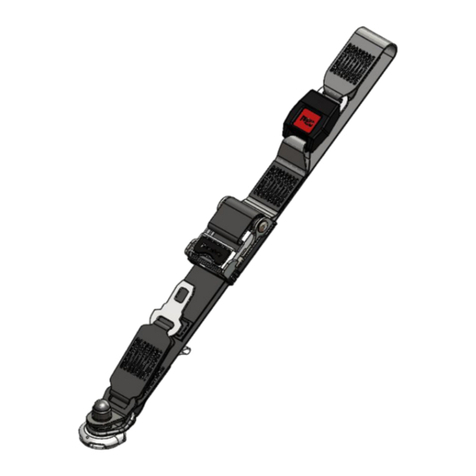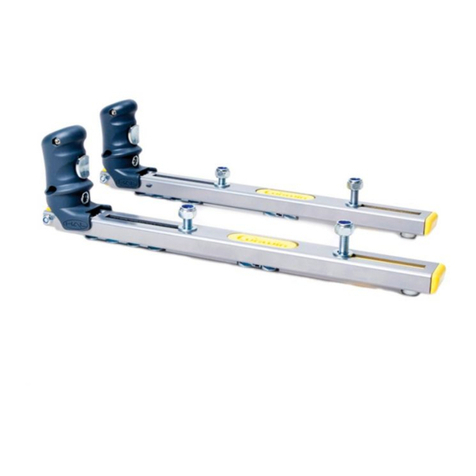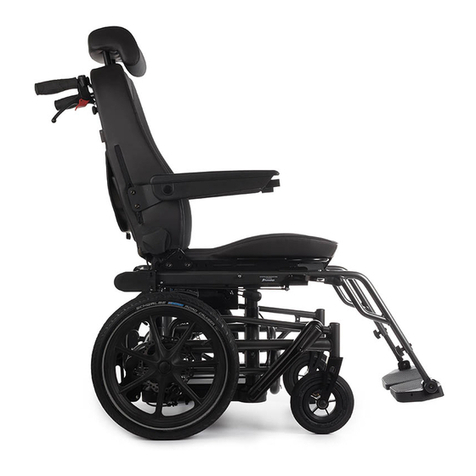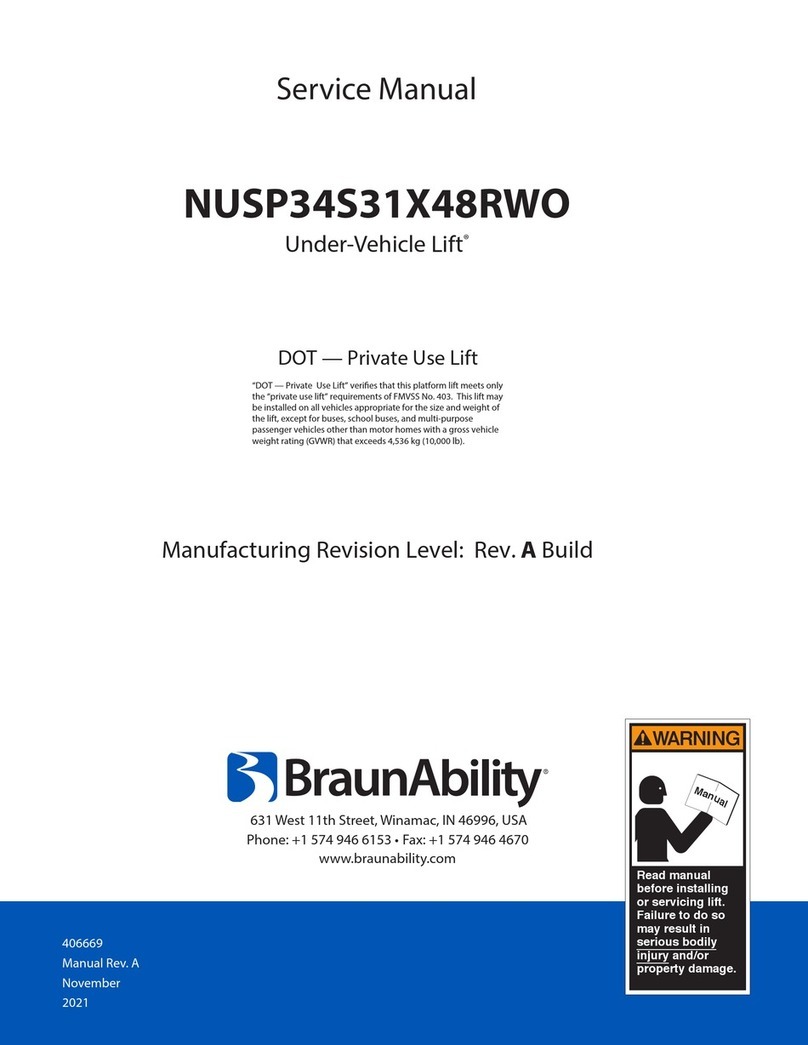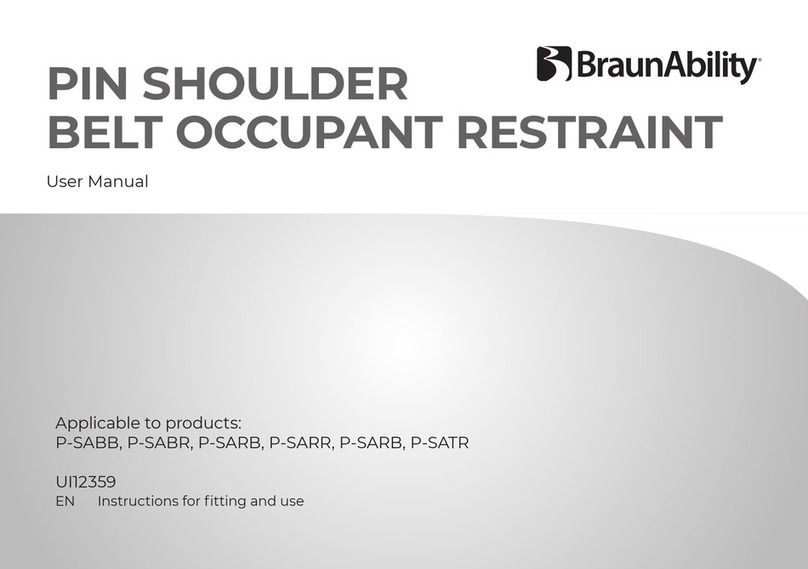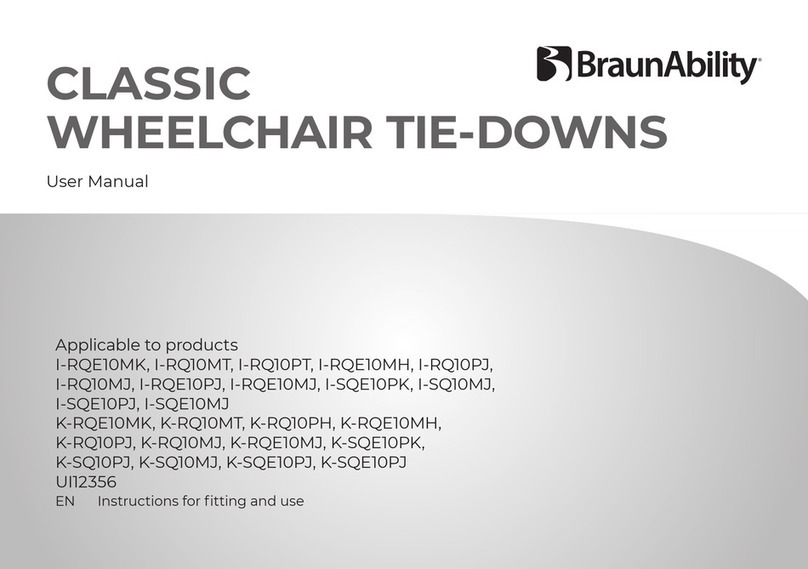
Fit and use
Rail Floor - 3 point conguration
1. The rail will have been installed in the vehicle in accordance with our own
and the vehicle converter’s instruction. Position wheelchair within vehicle as
required.
2. Wheelchair tie-downs (not supplied with these restraints) should be tted rst
to secure the wheelchair, before any occupant restraint is tted.
3. Position the occupant restraint behind the wheelchair tie-down, with reel
housing (Fig 1A) on the window side of the vehicle and reversible/xed stalk
(Fig 1B) on the aisle side.
4. Fit the occupant restraint ATF (aluminium track tting) into the rail by aligning
the ATF feet with the cut-out sections of the rail. Locate into the rail (Fig 2).
5. Press on the ribbed part of the ATF, (Fig 2A), and push rmly towards the
wheelchair until the yellow plunger drops and locks into the rail.
6. Position the 3rd point xing into the cant rail (Fig 3) so that it is vertically above
the inertia reel casing xed onto the oor xing. Unfasten the tongue and
buckle.
7. Pull the webbing upwards and unfasten the tongue from the grey webbing
buckle.
8. Position the black webbing to form the lap belt and insert the tongue into the
buckle stalk.Ensure that the lap belt lays low on the pelvis of the occupant,
running as close as possible over the hips on both sides.
9. Remove the black plastic cover on the grey shoulder belt tongue and t into
the third point xing. Position the grey webbing to form the shoulder belt and
insert the buckle into the tongue. Adjust the height of the shoulder belt to
clear the occupant’s shoulder by approximately 25mm/1 inch (Fig 4).
10. The lap belt anchor points should be positioned to achieve belt angles of 30°
or more to the horizontal and preferably between 45° and 75° in order to t
low across the pelvis reducing the possibility of the belt loading the abdomen
(Fig 5). The pelvic restraint is designed to bear upon the bony structure of the
body and should be worn low across the front of the pelvis with any junctions
between the pelvic and shoulder restraints located near the wearers hips.
Removing the occupant restraint
1. Release the grey shoulder belt
from the lap belt section, then
from the third point xing and
carefully allow the shoulder belt
to return to the retractor.
2. Disconnect the black lap belt
from the buckle stalk on the aisle
side and carefully allow the lap
belt webbing to return onto it’s
retractor.
3. Connect the shoulder belt buckle
to the lap belt tongue above the
opening of the retractor box.
4. The wheelchair tie-down must
now be removed.
Fitting and using the 3 & 2 point retractable occupant restraint
10 Occupant restraints
